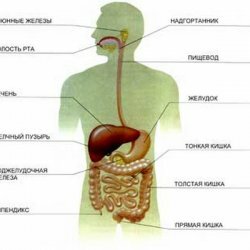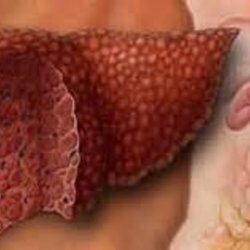What to take to restore microflora after antibiotics
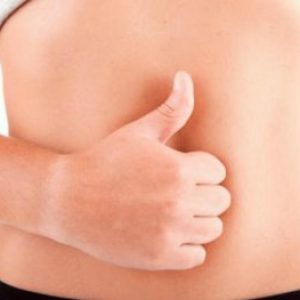
The concept of "restoration of intestinal microflora after antibiotics" appeared only when antibacterial drugs were actively used in medicine.The fact is that with the use of such drugs, the number of microbes sensitive to them decreases, and the growth of normal intestinal microflora is inhibited.In most cases, diarrhea, abdominal pain, discomfort and rumbling are caused by the growth of the pathogenic flora of the intestine just after the use of antibiotics.Therefore, doctors insist that after the main treatment, patients must necessarily undergo a course of recovery of the intestinal microflora.
This "activity" has the following objectives:
- get rid of colonization of the small intestine by a pathogenic microflora;
- restore the normal intestinal microflora;
- restore normal intestinal motility;
- to restore digestion and absorption - the basic functions of the intestine;
- to restore immunity.
Elimination intestinal colonization of pathogenic flora
growth of pathogenic intestinal microflora is suppressed by antibacterial drugs:
- If the cause of a violation of the microflora was the reception kakogo-Then a certain antibiotic, then it is necessary to implement its abolition.
- The optimal option is the appointment of antiseptics - they destroy the pathogenic microflora and do not affect the normal.Such drugs include Enterol, Furazolidone, Intetriks, Nitroxoline and others.
- If the patient's state of health implies the appointment of powerful antibiotics, then doctors give preference to directional drugs - they exert a depressing effect only on a particular pathogen.
- If the patient develops a severe condition with antibiotics with intoxication and diarrhea, the cause of this is clostridia difftile - a pathogenic microorganism.For treatment in this case, antimicrobial agents will be chosen - for example, Metronidazole or Vancomycin.
Restoration of digestion and immunity
There are a number of drugs that will help to quickly normalize and stabilize the intestine even after prolonged use of antibacterial drugs. These include:
-
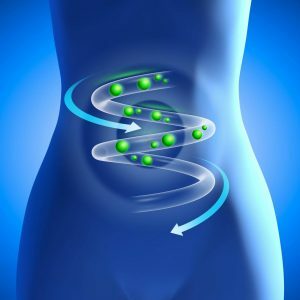 Digestive enzymes.These drugs help to improve digestion, are widely used to treat various diseases of the digestive system.To restore microflora after antibiotics, doctors prescribe pancreatic enzymes - for example, Pancitrat, Mezim Forte N, Creon, Penzital and others.
Digestive enzymes.These drugs help to improve digestion, are widely used to treat various diseases of the digestive system.To restore microflora after antibiotics, doctors prescribe pancreatic enzymes - for example, Pancitrat, Mezim Forte N, Creon, Penzital and others. - To improve the suction function.Such drugs are able to stabilize the membranes of the intestinal epithelium, which will reduce the adhesion of bacteria on them.These medicines include Legalon, Essentiale or Karsil.
- For normalization of intestinal motility.After taking antibacterial drugs, motor skills start to work incorrectly, which leads to pain, stool disorders.To cope with this problem will help Loperamide or Trimebutin.
- Conclusion of pathogenic bacteria.That beneficial bacteria in the human intestine can develop and grow, it is necessary to remove from it not only pathogenic bacteria, but also their toxins, allergens, excess bile acids, poisons.This will help enterosorbents, which include Enterosgel and Smecta.
- Prevention of bloating.Espumizan is able to destroy gas bubbles in food suspensions, it can even prevent the formation of these vesicles, which facilitates the patient's condition.
- Increased immunity activity.Preparations that are able to have such an effect are prescribed only to severely weakened patients.The most popular are Immunal, Likopid, Timalin, Tactivin, Immunofan.
Note: restoration of normal intestinal function after taking antibiotics is a long process and is at least 4 weeks.In addition to the above funds, the patient is assigned to receive vitamin-mineral complexes, selected individually.
Restoration of intestinal microflora
For this, you need to take probiotics and prebiotics.
Probiotics
Represents drugs that contain living microorganisms - they are the representatives of normal human microflora.Probiotics can be used after the course of antibacterial drugs, while taking such drugs.
Probiotic classes
Multicomponent probiotics, which in their composition contain one of the strains of lactobacilli, colibacillus or bifidobacteria.To this class of probiotics include Colibacterin, Lactobacterin, Vitanar, Bifidumbacterin, Sporobacterin, Enterol.
Polycomponent probiotics, which contain strains of enterococci, E. coli, lactobacterin and bifidobacterin.To a similar class of probiotics belong Floradofilus, Lineks, Bifiform, Bifikol, Biosporin.
Combined probiotics, which contain not only strains of beneficial bacteria, but also substances that stimulate the growth and development of normal intestinal microflora.Such probiotics include Acipol( contains lysozyme), Gialact( contains hyaluronic acid), Bifiform( contain lactulose and carob extract).
Note : multicomponent probiotics are more effective than other classes.They can be used for all conditions, even the heaviest ones.
Probiotic Assignment Features
If probiotics contain intestinal bacilli, then they are prescribed only in particularly severe cases, when intestinal microflora disorders after taking antibiotics take a long time.
Probiotics, which contain bifidobacteria, are widely used in pediatric practice, for adults they are used for preventive purposes.
Probiotics with lactobacilli are most often used in cases when it is not possible to cancel the course of treatment with antibacterial drugs.Lactobacilli have resistance to antibiotics.
Most popular probiotics
Linex
This is probably the probiotic that doctors prescribe most often.The composition contains strains of bacteria that represent normal intestinal microflora in its different parts.
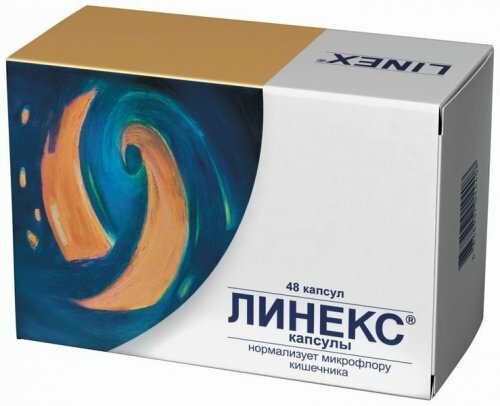
RioFlora
This drug reduces the risk of developing violations of normal intestinal microflora.The strains of bacteria contained in RioFlora inhibit the multiplication of pathogenic microflora, while maintaining the balance of healthy microflora and activating immunity.
Prebiotics
Represents food components, the fermentation of which occurs under the influence of the microflora of the lower intestine, stimulates its multiplication and provides vital activity.Medicines with prebiotics contain inulin, lactulose or oligofructosaccharides.
The most popular prebiotics
Hilak-forte
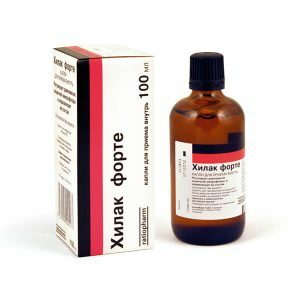 It is a concentrate of metabolic products of normal intestinal microflora, thanks to the preparation the biological environment in the intestine is restored and the growth of pathogenic flora is inhibited.
It is a concentrate of metabolic products of normal intestinal microflora, thanks to the preparation the biological environment in the intestine is restored and the growth of pathogenic flora is inhibited.
Doctors recommend taking Hilak-forte for 30 days simultaneously with an antibacterial drug or immediately after its application.
Dufalac, Portalalak
These prebiotics contain a synthetic disaccharide that, unchanged, reaches the transverse colon, where it splits.As a result of this cleavage, the acidity of the intestinal contents decreases, and lactobacilli begin to multiply actively.The clinical effect of the patient will be felt after two days of taking prebiotics.
Pamba, Amben
These prebiotics improve digestion, suppress the growth of pathogenic bacteria in the intestines, have an immunomodulating effect.
Restoration of intestinal microflora with folk remedies
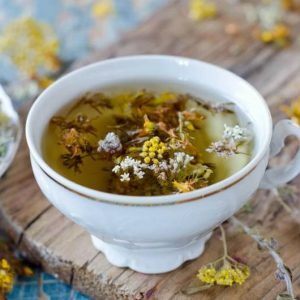 After a long reception of antibiotics, it is possible to restore the microflora with some folk remedies.
After a long reception of antibiotics, it is possible to restore the microflora with some folk remedies.
Important! Of course, before using these, you should consult your doctor - perhaps he will give permission for such procedures, and possibly identify the need to take only the above drugs.
Chamomile, eucalyptus, sage and St. John's wort are medicinal herbs that have an antimicrobial effect.To restore the microflora, you can drink decoctions of these plants.Morse from raspberries and strawberries has a similar effect.
Quite often, a violation of the intestinal microflora after taking antibiotics is manifested by constipation and in this case you can take senna and aloe - these medicinal plants are able to strengthen intestinal peristalsis.It is worth paying attention to the fact that when using senna, there may be a side effect, namely, abdominal pain.
In the case of diarrhea, the oak bark, the broth from the blood-groove and pomegranate crusts, will help.These listed medicinal plants have a fixing effect.But you need to be as accurate as possible in the intake of these plants, as exceeding the dosage is fraught with the development of constipation, and this is also considered a violation of the intestine.
An excellent antimicrobial effect is possessed by honey.This product is not only able to destroy pathogenic microorganisms, but to strengthen intestinal peristalsis.
When violations of the intestinal microflora, which occurs in all cases of antibiotics, it will be useful to swallow one clove of garlic entirely, without crushing it.You need to consume garlic once a day, to strengthen the recovery effect, it is recommended to wash garlic with any fermented milk product.
There are a lot of ways to improve the body after taking antibiotics.But the answer to the question "what to take to restore microflora after antibiotics" should be given by a specialist - he can really assess the state of the digestive system, exclude any pathology of the intestine, take into account possible allergic reactions.

